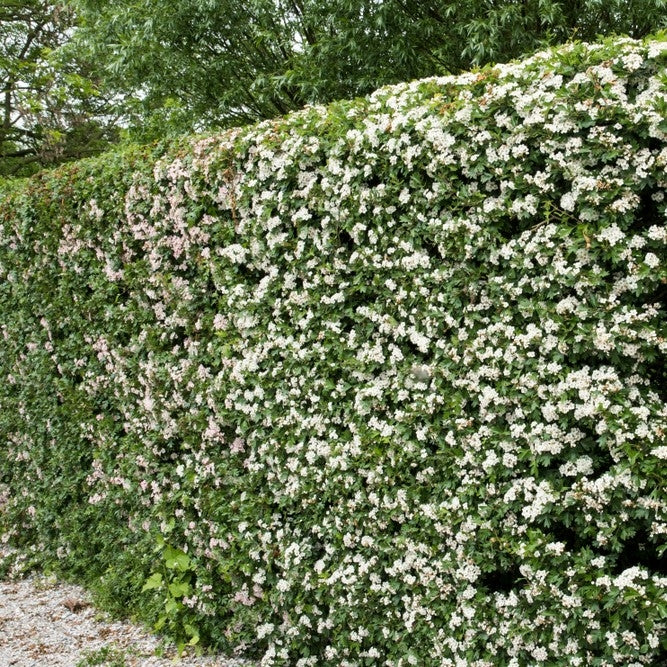Skip to product information

Crataegus monogyna, commonly known as Hawthorn or Quickthorn, is a deciduous shrub or small tree that is frequently used for hedging due to its dense growth habit, hardiness, and attractive features. When obtained as bare root plants for hedging purposes, there are several considerations to keep in mind:

Crataegus monogyna (Hawthorn/Quickthorn) - Bareroot
£6.25
-
Bare Root Plants:
- Hawthorn is often available as bare root plants, which means the plants are sold without soil around their roots. This is a common and cost-effective way to purchase hedging plants during the dormant season (late autumn to early spring).
-
Appearance:
- Crataegus monogyna features small, deeply lobed leaves that are dark green in colour during the growing season. In spring, it produces clusters of fragrant white flowers, followed by red berries in the fall.
- The thorny branches create a dense, impenetrable hedge, providing security and serving as a deterrent to unwanted intruders.
-
Hedging Benefits:
- Hawthorn is valued for its ability to create a robust, effective hedge. Its thorny branches make it an excellent choice for security and privacy purposes.
- The dense foliage provides nesting sites for birds, and the berries are a valuable food source for wildlife, contributing to biodiversity.
-
Hardiness and Adaptability:
- Crataegus monogyna is known for its hardiness and adaptability to various soil types, including clay and loam.
- It can thrive in full sun to partial shade, making it versatile for different growing conditions.
- The species is relatively low-maintenance and resistant to common pests and diseases.
-
Planting and Care:
- When planting bare root Hawthorn, soak the roots in water for a few hours before planting to rehydrate them.
- Space the plants according to the desired hedge density, and plant them in a trench to ensure proper root coverage.
- Regular pruning, typically carried out in late winter or early spring, helps maintain the desired shape and density of the hedge.
-
Wildlife Attraction:
- The flowers attract pollinators, and the berries are consumed by birds, contributing to the overall ecological balance of the garden.
Reliable shipping
Flexible returns
